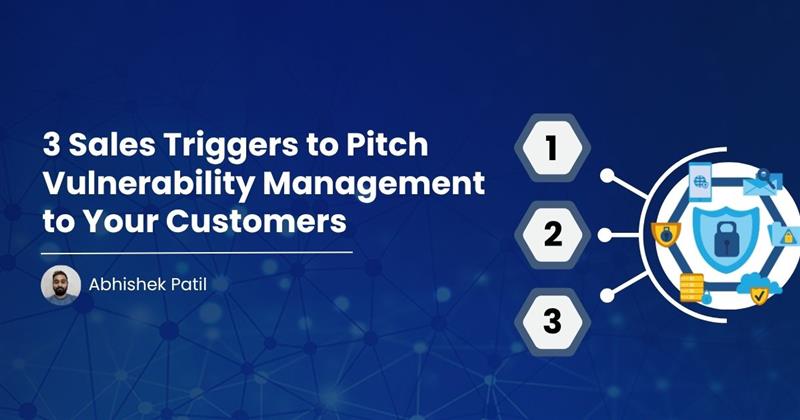Crafting a compelling pitch around vulnerability management starts with knowing exactly when your customers are most receptive. As a partner alliance manager for MSPs, your role is to spot those moments and guide prospects to recognize how proactive risk reduction pays off in the form of lowered incidents, smoother operations, and happier end users. Below are three high-impact sales triggers you can weave into your conversations to open doors, deepen engagements, and win more deals.
1. When New Regulations Land on Your Customers’ Doorstep
Regulatory shifts are a natural catalyst for security conversations. Whether it’s a change in data protection laws, fresh industry standards, or a revised audit cycle, clients suddenly face pressure to demonstrate compliance. That’s your moment to frame vulnerability management as the streamlined path to meeting their next audit.
- Bring up the mandate: Before you reach out, research which rules affect each target, such as GDPR updates in Europe, CCPA expansions in California, PCI-DSS revisions for payment environments, or healthcare privacy changes like HIPAA guidance.
- Connect the dots: Show how unpatched software or unchecked misconfigurations translate directly into audit findings, fines, or forced downtime.
- Quantify the effort saved: Paint a picture of replacing manual spreadsheet tracking, gap-filling, and last-minute scanning with continuous vulnerability assessments and automated remediation workflows.
By tapping into concrete compliance deadlines — similar to “Your ISO 27001 audit kicks off January 2026” — you help customers see vulnerability management not as another tool, but as a practical shield against reputational and financial penalties.
2. When High-Severity Flaws Dominate Headlines
Nothing catches a decision maker’s attention like a widespread vulnerability splashed across every tech publication. Think of a zero-day exploit that halts mission-critical services, or a flaw in a popular ERP module. In the wake of those announcements, customers scramble to understand their exposure and fix gaps before attackers pounce.
- Trigger timely alerts: As news breaks, curate a brief for the same and share it with clients, talking very clearly about the urgency.
- Offer rapid assessments: Propose a focused risk review or health check of sorts that’s designed to pin down high-risk assets within days, not weeks.
- Bundle in quick wins: Suggest patch campaigns, configuration hardening, or access entitlement reviews that can be executed immediately, showcasing rapid time-to-value.
Positioning your MSP as the first responder in a crisis empowers you to reinforce trust, drive immediate project work, and lay the groundwork for ongoing vulnerability management contracts.
3. When Major Infrastructure Changes Roll Out
Every time customers introduce new technologies — be they cloud migrations, remote-access expansions, or mergers and acquisitions — they temporarily stretch their security posture. That window of transition is prime for pitching vulnerability management as the guardrail that keeps risk from spiking.
- Stay ahead of project roadmaps: Align with sales and delivery teams to learn about upcoming cloud-onboarding, VPN rollouts, or office-branch network upgrades.
- Craft targeted messaging: You can phrase statements as follows to directly address the needs of your prospects: “As you move those servers into Azure, you’ll need visibility across virtual machines, containers, and serverless functions. That’s where a unified vulnerability platform pays off.”
- Propose an operational baseline: Position a discovery phase that documents all assets, assesses their security state, and sets remediation priorities before the cutover, preventing surprises.
Speaking your customers’ language around digital transformations and infrastructure refreshes demonstrates that your MSP understands their strategic goals, and is equipped to keep them secure along the journey.
Putting Triggers into Practice
To turn these openings into lasting engagements, follow a three-step partner-friendly framework:
- Build a trigger calendar: Map compliance deadlines, known vulnerability disclosure schedules, Microsoft Patch Tuesday, for example, and client project timelines.
- Develop modular offers: Package “compliance acceleration,” “rapid risk review,” or “transition-safe vulnerability management” as repeatable services, complete with sales decks, case studies, and pricing templates.
- Empower your sales teams: Equip account executives with trigger-driven playbooks like email templates, call scripts, and battlecards that speak directly to each moment of opportunity.
Embed these triggers into your go-to-market rhythm, and you’ll spark relevant conversations, shorten sales cycles, and build a reputation as the security partner MSPs trust to anticipate threats over merely reacting to them.
When it comes to vulnerability management, timing is half the battle. Regulators, cybercriminals, and technology upgrades each create urgency that your MSP can harness to open doors and demonstrate value. By aligning your pitches with these three high-impact triggers, and supporting them with ready-made offers, you’ll convert one-off projects into ongoing engagements and cement your status as a strategic, proactive advisor.
If you’re looking to boost your profitability, contact our team to schedule a GTM call today!

